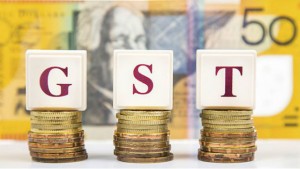Home » Commentary » Opinion » GST distribution debate fires up again
· Business Insider
 Once again we’re seeing a blaze of federal vs state and state vs state discussion about the distribution of GST revenue. And no surprise it’s an energetic discussion, because the distribution is a zero-sum game in which any change that benefits one state will be at the expense of others, unless the Commonwealth expands the pool from its own revenues.
Once again we’re seeing a blaze of federal vs state and state vs state discussion about the distribution of GST revenue. And no surprise it’s an energetic discussion, because the distribution is a zero-sum game in which any change that benefits one state will be at the expense of others, unless the Commonwealth expands the pool from its own revenues.
It is a field in which even good ideas for change are bound to attract fierce opposition, for there will always be losers.
This is the field onto which Malcolm Turnbull marched last weekend as he went to Perth to say what his Liberal brethren wanted to hear: that Western Australia is being dudded by the current GST distribution formula and this must never be allowed to happen again (to any state, not just WA).
His proposal – short on detail – was to place a floor under the proportion of an equal-per-capita distribution (the ‘relativity’, in the jargon of horizontal fiscal equalisation) below which no state will be allowed to fall in the future.
Turnbull did not specify the level of the floor, but figures as low as 50% and as high as 75% have been mentioned as possibilities. (Western Australia’s proportion has fallen as low as 30% as a result of the strong flow of mining royalty revenue in earlier years, which led to its GST share being discounted by the Grants Commission.)
Turnbull’s proposal has attracted the wrath of states such as South Australia and Tasmania, which only stand to be on the losing side of such a mechanism were it ever to be triggered. Such a self-interested response was entirely predictable and in itself does not mean the proposal is a bad one, but there are other reasons to think it is.
The collapse in WA’s share was a result of the horizontal equalisation system working as it was meant to. Overriding the system to prevent an outcome you don’t like is essentially an arbitrary intervention. If the system is flawed, better to rebuild it from the ground up than leave it in place and arbitrarily adjust the results.
When Nick Greiner and John Brumby – both former premiers and in one case treasurer – conducted the last official review of the horizontal equalisation system in 2012, they considered and rejected the idea of a floor.
The Greiner/Brumby review did subject the system to detailed examination and their proposals for change were modest – surprisingly so as the authors come from states that have traditionally demanded fundamental change.
Their findings were music to the ears of defenders of Australia’s detailed and comprehensive horizontal equalisation arrangements – essentially the beneficiary states and officials who grew up with the system and/or designed it – who see it as world’s best practice in its field.
However, the story doesn’t end there. Horizontal equalisation is very well trodden ground. For instance, Greiner and Brumby were preceded ten years earlier by two eminent economists – Ross Garnaut and Vince FitzGerald – who did recommend fundamental change. (Without impugning their objectivity, but for full disclosure, I should observe that Garnaut and FitzGerald were commissioned by the traditional ‘donor’ states — New South Wales, Victoria and Western Australia.)
At the core of the Garnaut/FitzGerald recommendations was a shift to an equal-per-capita distribution of GST to all states and territories, but with a guarantee of no real per capita decline for any state or territory relative to the current system. Although an equal-per-capita distribution would still represent a form of horizontal equalisation, it would result in less redistribution than the current system and be much simpler. Others to pick up this idea include the Abbott government’s commission of audit led by Tony Shepherd.
The Greiner/Brumby review, although modest in its recommendations, did conclude that an equal-per-capita distribution would be the best in the long term with any state requiring long-term financial support receiving it directly from the Commonwealth.
The fundamental problem with the current system, apart from its impenetrable complexity, lies in the perverse incentives it creates for the behaviour of state governments. In principle it is supposed not to affect incentives at all because the elaborate web of financial supports and handicaps it provides are meant only to reflect the intrinsic fiscal advantages and disadvantages each state faces, not the effects of states’ own policy choices.
In practice, it is impossible to disentangle intrinsic from policy-induced advantages and disadvantages, and mismanagement ends up being rewarded while good policies are penalised to some extent. In WA’s case, the surge in royalty revenue partly reflected the state’s own role in ensuring the resources were developed in the first place.
Turnbull’s proposal is arbitrary and in any case the circumstances it is designed to address may never recur, but the current system of GST distribution does not live up to the standards of perfection its defenders claim for it. The proposal may well get nowhere in COAG, but we can be sure the topic will not go away — and nor should it until the system is fundamentally changed.
Robert Carling is a Senior Fellow at the Centre for Independent Studies
GST distribution debate fires up again